Discover 35 hidden attractions, cool sights, and unusual things to do in Osaka (Japan). Don't miss out on these must-see attractions: Osaka Castle, Universal Studios Japan, and Osaka Aquarium Kaiyukan. Also, be sure to include Osaka Castle Park in your itinerary.
Below, you can find the list of the most amazing places you should visit in Osaka (Osaka).
Table of Contents
Osaka Castle
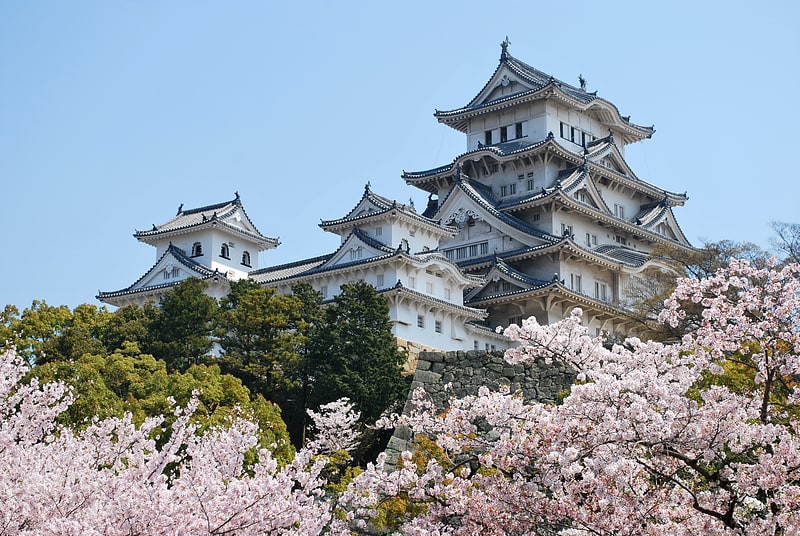
Also known as: 大坂城
Renowned, historic castle with a museum. Osaka Castle is a Japanese castle in Chūō-ku, Osaka, Japan. The castle is one of Japan's most famous landmarks and it played a major role in the unification of Japan during the sixteenth century of the Azuchi-Momoyama period.[1]
Address: 1-1 Ōsakajō, Chūō-ku, Osaka, 540-0002 Osaka (ミナミ)
Universal Studios Japan
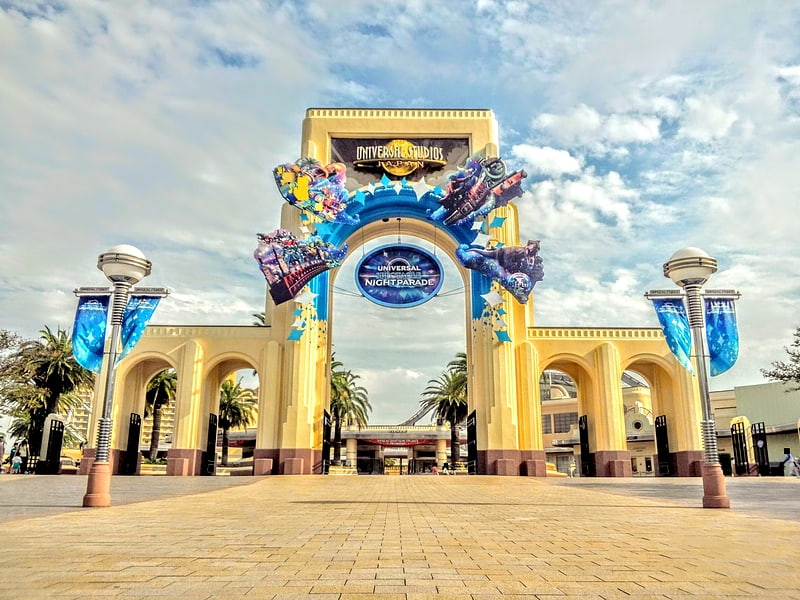
Also known as: ユニバーサル・スタジオ・ジャパン
Movie-themed amusement park with rides. Universal Studios Japan, located in Osaka, is one of six Universal Studios theme parks, owned and operated by USJ LLC, which is wholly owned by NBCUniversal. The park is similar to the Universal Orlando Resort since it also contains selected attractions from Universal Orlando Resort and Universal Studios Hollywood.
The park opened on 31 March 2001. Over 11 million guests visited the park in its opening year, making it the world's fastest amusement park to have achieved the 10 million milestone at the time. Since then, Universal Studios Japan has had approximately 8 million visitors every year. It is one of the three Universal Studio theme parks in Asia, the other two being Universal Studios Singapore and Universal Studios Beijing.
Various events were held in the year 2011 to celebrate the park's tenth anniversary, by which time a total of 88 million guests had cumulatively attended the park. There were 700,000 annual passport holders in June 2012 and in the 2012 fiscal year, 9.75 million guests visited the park. During the 2013 fiscal year, Universal Studios Japan received 10.5 million guests. Various factors contributed to this growth in 2013, including the opening of the backwards roller coaster "Hollywood Dream – The Ride – Backdrop" in March, and the "New Amazing Adventures of Spider-Man - The Ride 4K3D" in July, which installed new 4KHD technology, which proved to be popular among the younger generation of visitors. The family area "Universal Wonderland" which opened in March 2012 also attracted many families.
Recent installments include limited-time attractions such as "Biohazard - The Real" and "Monster Hunter - The Real", both based on popular video game franchises, and "One Piece Premier Show", which is based on the popular anime series, providing attractions based on entertainment worldwide. On 15 July 2014, The Wizarding World of Harry Potter, a themed area based on the blockbuster Harry Potter film series, opened to the public. The popular ride Harry Potter and the Forbidden Journey, located in The Wizarding World of Harry Potter, was revamped to play in 3D only 10 months after its opening as the first ride of its kind in the world. With a total investment of 45 billion yen, the addition of The Wizarding World of Harry Potter to the park is projected to have an economic ripple effect of 5 trillion 60 million yen over the next 10 years in Japan, anticipating many visitors from both Japan and overseas.
On Monday, 29 October 2012, Universal Studios Japan greeted its 100 millionth visitor since its opening in 2001. According to the 2014 Theme Index Global Attraction Attendance Report, Universal Studios Japan is ranked fifth among the top 25 amusement/theme parks worldwide, attracting 11.8 million visitors in 2014, 16.8% more than in the previous year. On 27 February 2020, Universal announced a closure of the park until 22 March 2020 to combat the COVID-19 pandemic. Since then, they have extended the closure to 31 May 2020, and delayed again until 19 June 2020.[2]
Address: 2 Chome-1-33 Sakurajima, Konohana-ku, Ōsaka-shi, 554-0031 Osaka (ベイエリア)
Osaka Aquarium Kaiyukan
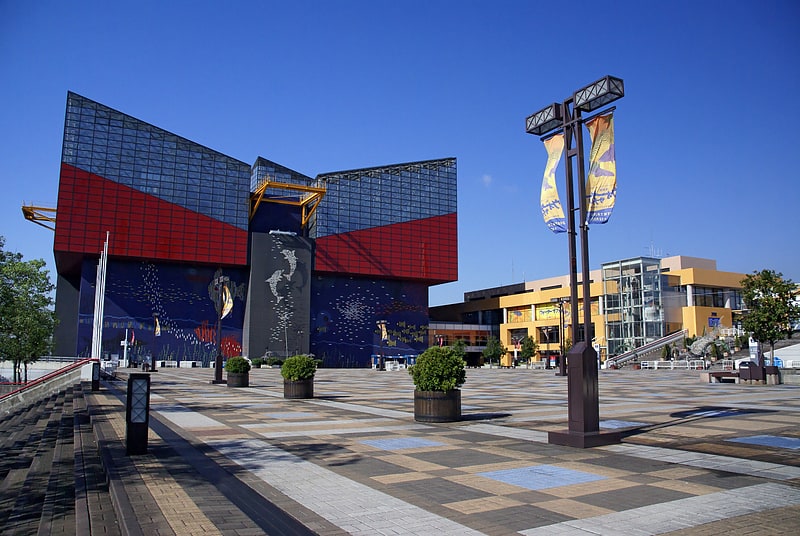
Also known as: 海遊館
Huge landmark for marine-life exhibits. The Osaka Aquarium Kaiyukan is an aquarium located in the ward of Minato in Osaka, Osaka Prefecture, Japan, near Osaka Bay. When it first opened, it was the largest public aquarium in the world, and is a member of the Japanese Association of Zoos and Aquariums.
The aquarium is about a five-minute walk from Osakako Station on the Osaka Municipal Subway Chūō Line, and is next to the Tempozan Ferris Wheel.[3]
Address: 1-chōme-1-10 Kaigandōri, Minato-ku, Osaka, 552-0022 Osaka (ベイエリア)
Osaka Castle Park
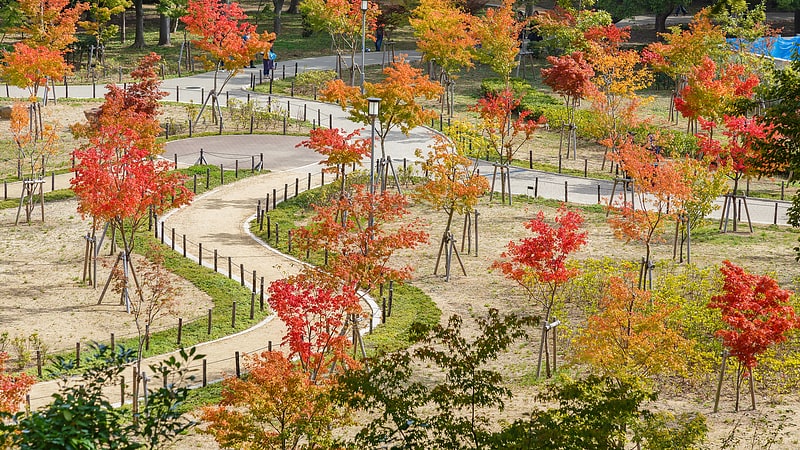
Also known as: 大阪城公園
Large urban park with gardens and a castle. Osaka Castle Park is a public urban park and historical site situated at Osaka-Jō in Chūō-ku, Osaka, Japan. It lies on the south of the Ōkawa and occupies a large area in the center of the city of Osaka. This park is the second largest park in the city.
The park was constructed on a site with a long history. In the fifteenth century, a militant temple, Ishiyama Hongan-ji, was built here. In 1583, Toyotomi Hideyoshi destroyed Ishiyama Hongan-ji and built Osaka Castle here. From 1870 to 1945 the Osaka Imperial Arsenal used a large area, and it was destroyed at end of World War II. In 1931, Osaka Castle Park was opened to the public, but most of the area was used by the Imperial Japanese Army. After World War II, most of the military complex was removed and replaced by the public urban park.
In the park, there is Osaka Castle Hall, a large athletic field, baseball field, football field, open-air music theatre, open-air concert hall, and Osaka Castle Keep Tower. From the top of keep tower, the vista includes Osaka Bay to Mount Ikoma, which surround the Osaka Plain. Many busking groups perform in the park. In spring, cherry blossom and plum blossom viewing is popular at this park.[4]
Address: 1 Osakajo, Chuo Ward, Osaka, 540-0002 Osaka (ミナミ)
Umeda Sky Building

Also known as: 梅田スカイビル
High-rise with a roof-garden observatory. The Umeda Sky Building is the nineteenth-tallest building in Osaka Prefecture, Japan, and one of the city's most recognizable landmarks. It consists of two 40-story towers that connect at their two uppermost stories, with bridges and an escalator crossing the wide atrium-like space in the center. It is located in Umeda district of Kita-ku, Osaka.
The building was originally conceived in 1988 as the "City of Air" project, which planned to create four interconnected towers in northern Osaka. Eventually, the Japan economic bubble of the 1980s burst and brought the number of towers down to two.
The 173 m building was designed by Hiroshi Hara. It was constructed by Takenaka Corporation and was completed in 1993.
The building features a rooftop observatory, The Floating Garden Observatory, as well as an underground market that attempts to recreate the atmosphere of Osaka in the early 20th century. At the base of the towers is an urban garden with walking trails and water features.[5]
Address: 1-1-88 Oyodonaka, Kita-ku, 531-6023 Osaka (キタ)
Expoland
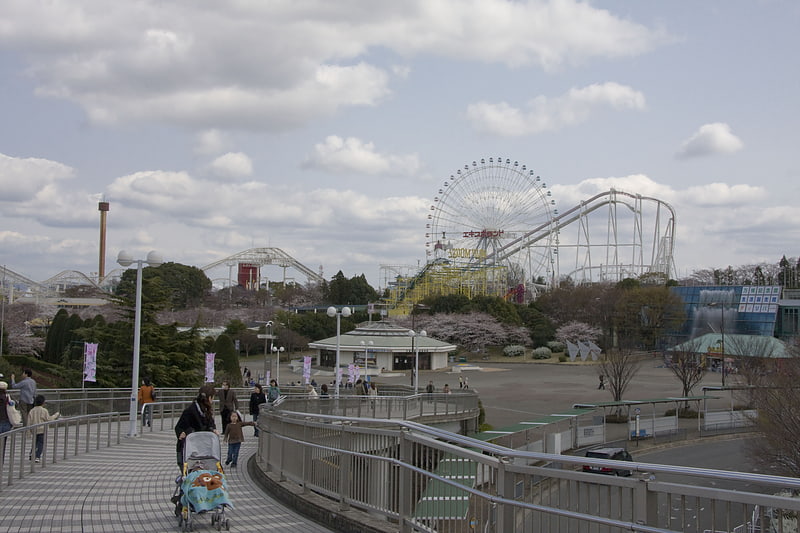
Also known as: エキスポランド
Amusement park. Expoland, located in Suita, Japan was opened as the amusement zone at the International Exposition in 1970 in Osaka and thrived for over 30 years as an amusement park. There were more than 40 rides and attractions and 19 restaurants and shops. The park was permanently closed in 2009.
On May 5, 2007, Fujin Raijin II, the park's TOGO stand-up coaster, derailed, killing Yoshino Kogawara, a 19-year-old university student from Higashiomi, Shiga and injuring an additional nineteen guests. Initial reports said that forty people were injured, with thirty-one being taken to hospital. An investigation revealed that the ride derailed due to a broken axle. None of the ride vehicle's axles had been replaced for fifteen years. Following this accident, similar coasters at other Japanese parks were voluntarily shut down and inspected to see if they could also have the same axle flaw. Expoland was cited by authorities for faulty maintenance when similar axle cracks were found on a second train a month later.
The park reopened after the accident but closed again on December 9, 2007, citing a lack of attendance. On February 9, 2009, its owners decided to close the park down permanently.[6]
Address: 千里万博公園2-1 EXPOCITY内, 565-0826 吹田市
Shitennō-ji
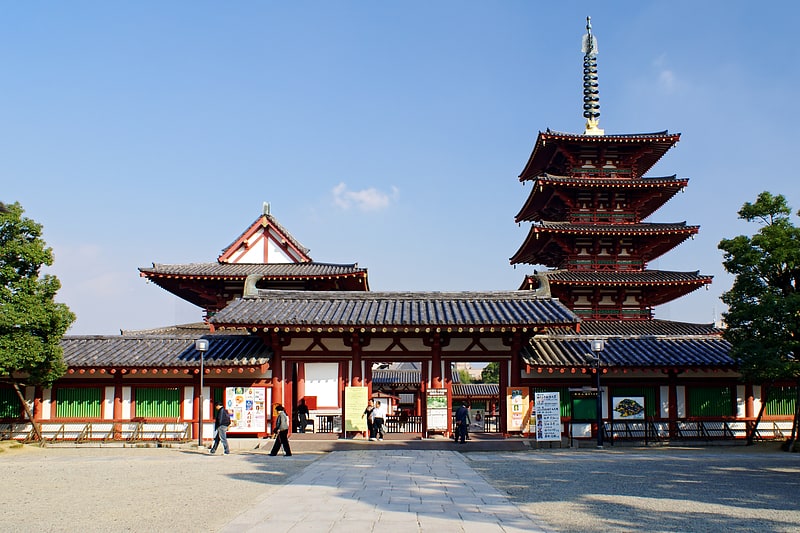
Also known as: 四天王寺
Buddhist temple dating to 593 A.D.. Shitennō-ji is a Buddhist temple in Ōsaka, Japan. It is also known as Arahaka-ji, Nanba-ji, or Mitsu-ji. The temple is sometimes regarded as the first Buddhist and oldest officially-administered temple in Japan, although the temple complex and buildings have been rebuilt over the centuries, with the last reconstruction taking place in 1963. It is the head temple of the Wa Sect of Buddhism.[7]
Address: 1-11-18 Shitennoji, Tennoji-ku, 543-0051 Tennoji
Hollywood Dream – The Ride
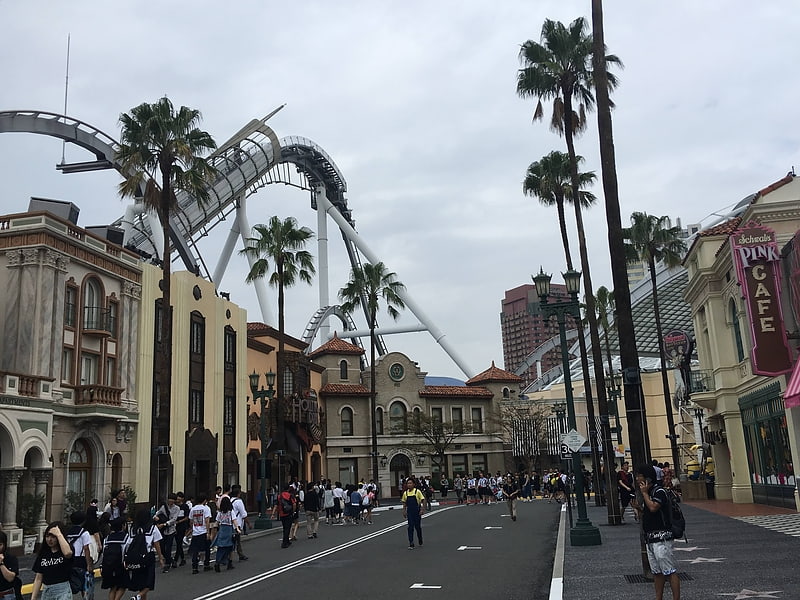
Also known as: ハリウッド・ドリーム・ザ・ライド
Roller coaster in Osaka, Japan. Hollywood Dream – The Ride(ハリウッド・ドリーム・ザ・ライド)is a steel roller coaster located at Universal Studios Japan. Designed by Bolliger & Mabillard, it features inbuilt sound systems allowing riders to choose their ride music.[8]
Museum of History
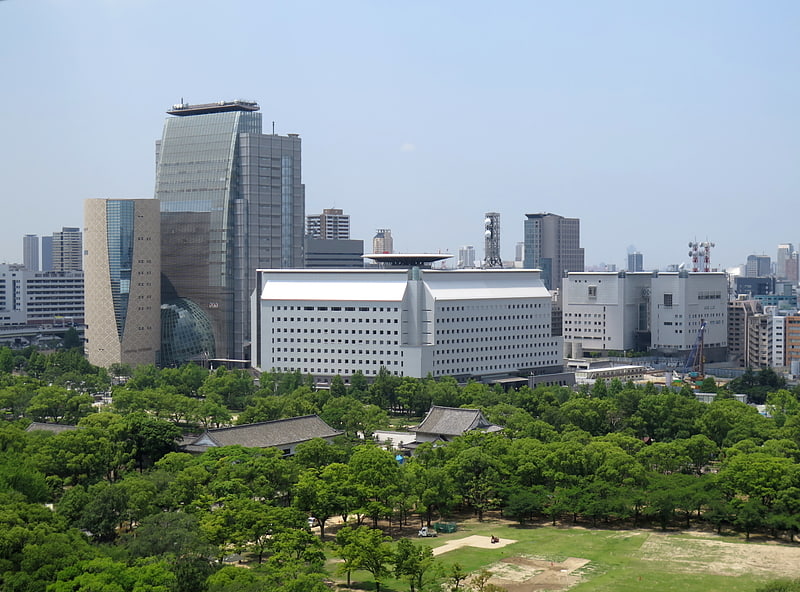
Museum in Osaka, Japan. Osaka Museum of History opened in Chūō-ku, Ōsaka, Japan in 2001. The project architects were César Pelli & Associates and Nihon Sekkei. It is adjoined by an atrium to the NHK Osaka Broadcasting Center, which was designed by the same architects and built at the same time. The former Osaka City Museum closed earlier the same year. Over four floors, the displays tell the history of the city from the time of the Former Naniwa Palace, located in the area now occupied by the museum. Remains of a warehouse, walls, and water supply facilities for the palace are also on view in the basement. In 2005, the collection numbered some 100,000 objects. By 2016, it had grown to 138,595 objects, while a further 17,632 items were on deposit at the museum.[9]
Address: 4 Chome-1-32 Ōtemae, Chūō-ku, Ōsaka-shi, 540-0008 Osaka (ミナミ)
Museum of Natural History
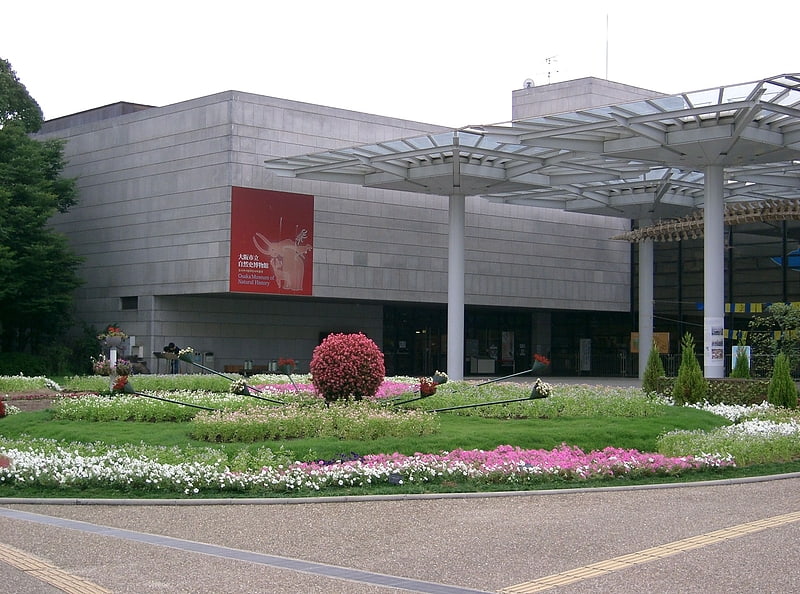
Osaka Museum of Natural History is a museum of natural history in Higashisumiyoshi-ku, Ōsaka, Japan.[10]
Address: 1-23 Nagaikoen, Higashisumiyoshi-ku, 546-0034 Osaka (南大阪)
Itami City Museum of Insects
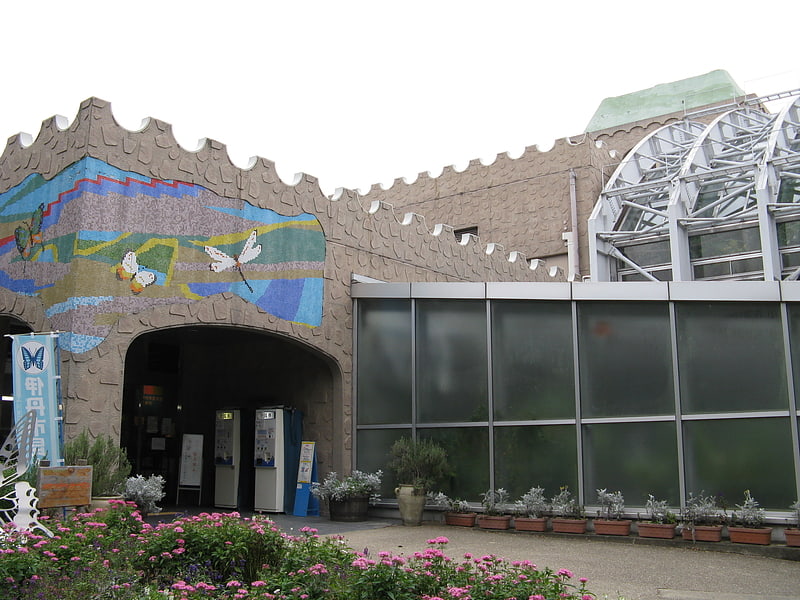
Itami City Museum of Insects is an insectarium in Itami, Hyogo Prefecture, Japan.[11]
Kyocera Dome Osaka

Also known as: 大阪ドーム
Stadium in Osaka, Japan. The Kyocera Dome Osaka is a baseball stadium located in Osaka, Osaka, Japan. Opened in 1997, the stadium was the home field of the Kintetsu Buffaloes. In 2005, the stadium became one of the homes of the Orix Buffaloes, a result of the merger between the Orix BlueWave and Kintetsu Buffaloes. Prior to the Osaka Dome opening, the Buffaloes played their home games at Fujiidera Stadium. The Hanshin Tigers also use the stadium as their "home field" for their season openers and their home games in August because their stadium, Koshien Stadium, is used for high school baseball tournaments during those periods.
The Dome hosted the Pride Total Elimination 2005 and Pride Total Elimination Absolute mixed martial arts fights.[12]
Address: 3 Chome-中2-中2番1号 Chiyozaki, Nishi-ku, Ōsaka-shi, 550-0023 Osaka (ミナミ)
Minami-Temma Park
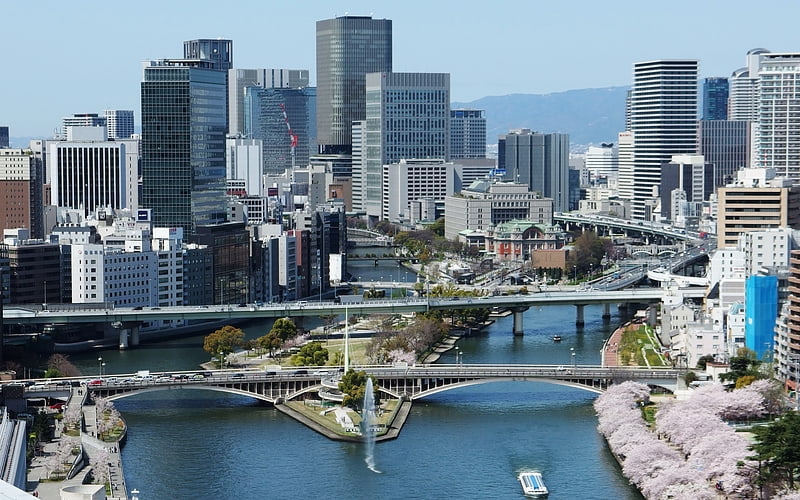
Also known as: 南天満公園
City park in Osaka, Japan. Minami-Temma Park is a public urban park situated at 1 chōme Tenjimbashi in Kita-ku, Osaka, Japan. It lies on the north side of the Ōkawa between Temma-bashi bridge and Tenjim-bashi bridge.
The park was constructed at the former Temma-Aomono-Ichiba vegetable wholesale market. Now, this park is a popular place for cherry blossom viewing in spring along the Kyū-Yodo River. The cherry blossom promenade is also a cycle path, which continues to northern Osaka (Suita City).[13]
Tower of the Sun
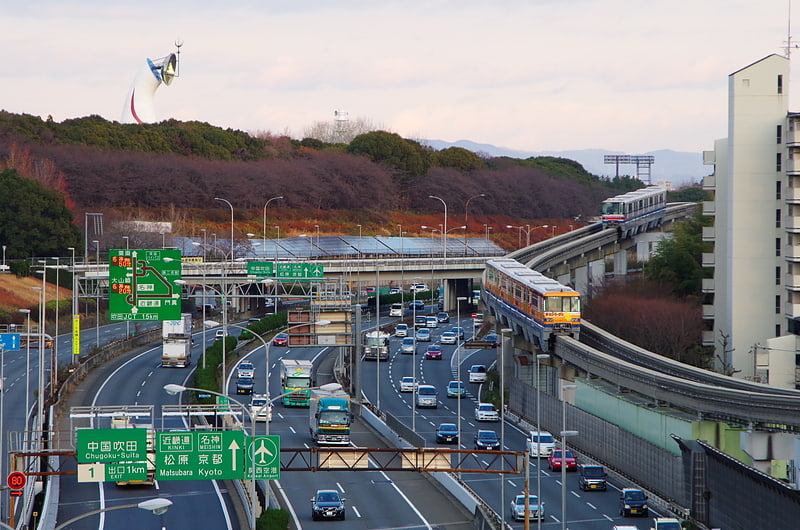
Also known as: 太陽の塔
Unique, massive sculpture from the 1970s. The Tower of the Sun is a building created by Japanese artist Tarō Okamoto. It was known as the symbol of Expo '70 and currently is preserved and located in the Expo Commemoration Park in Suita, Osaka Prefecture, Japan. The tower has three faces on its front and back.[14]
Address: Expo Park Senri, 565-0826 Suita
National Museum of Art
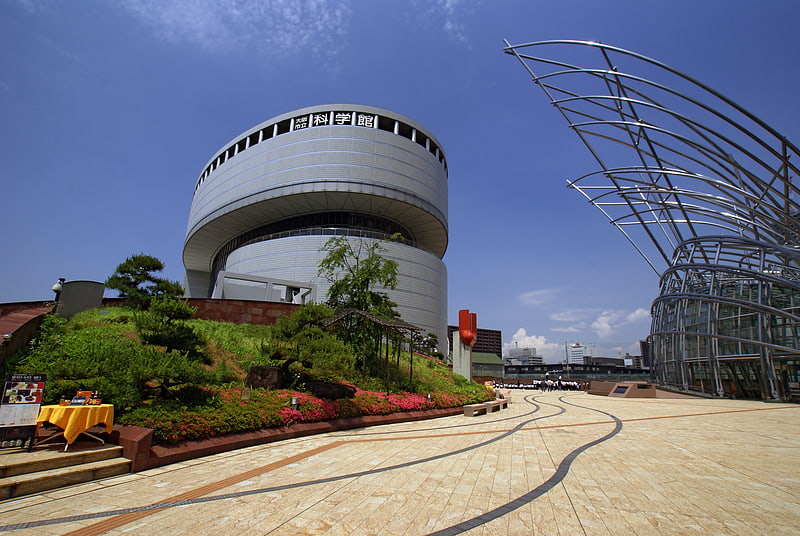
Also known as: 国立国際美術館
Subterranean museum with famous artwork. The National Museum of Art, Osaka is a subterranean Japanese art museum located on the island of Nakanoshima, located between the Dōjima River and the Tosabori River, about 10 minutes west of Higobashi Station in central Osaka.
The official Japanese title of the museum translates as the "National Museum of International Art". The museum is also known by the English acronym NMAO (National Museum of Art, Osaka).[15]
Address: 4丁目-2-55 Nakanoshima, Kita-ku, Ōsaka-shi, 530-0005 Osaka (キタ)
Tsūtenkaku
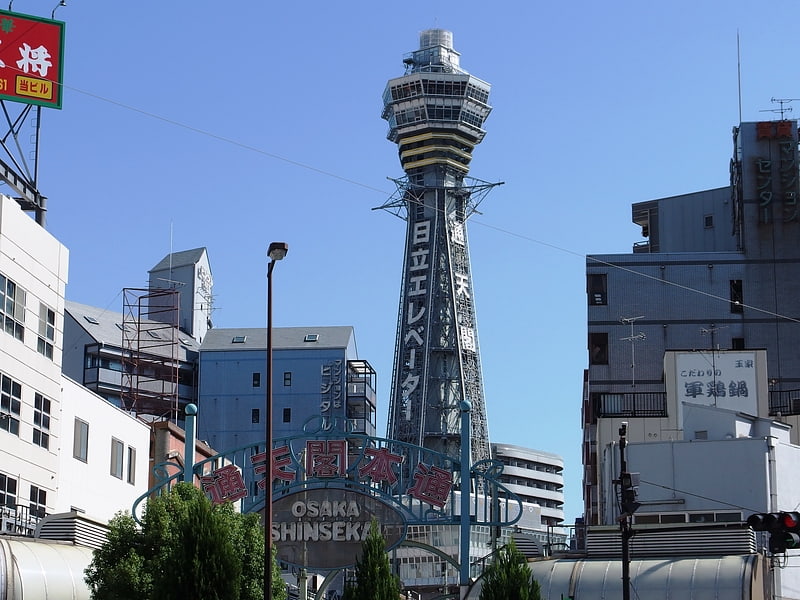
Also known as: 通天閣
Iconic tower with an observation deck. Tsūtenkaku, owned by Tsūtenkaku Kanko Co. Ltd. is a tower and well-known landmark of Osaka, Japan and advertises Hitachi. It is located in the Shinsekai district of Naniwa-ku, Osaka. Its total height is 103 m; the main observation deck is at a height of 91 m.[16]
Address: 1-18-6 Ebisuhigashi, Naniwa-ku, 556-0002 Osaka (ミナミ)
Expo Commemoration Park
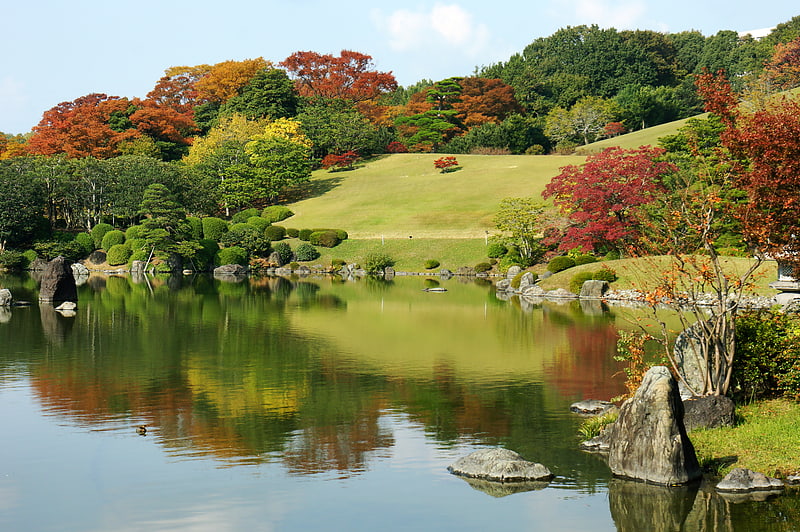
Also known as: 万博記念公園
Park with the Tower of the Sun. The Expo Commemoration Park or Expo '70 Commemorative Park is a park in Suita, Japan. It is north of Osaka. The park is the former site of Expo '70, a World's Fair held between March 15 and September 13, 1970. It is about 264 ha of lawn and forest, and has education and recreation facilities.
The National Museum of Ethnology, the Osaka Expo '70 Stadium, and part of the Expoland are in this park. The National Museum of Art used to be here but was moved to Nakanoshima area, Kita-ku, Osaka. The park has the Tower of the Sun, a symbolic landmark of the Expo '70, which has been preserved and repaired a number of times. Some of the materials used or built in the Expo '70 remain.[17]
Osaka Science Museum
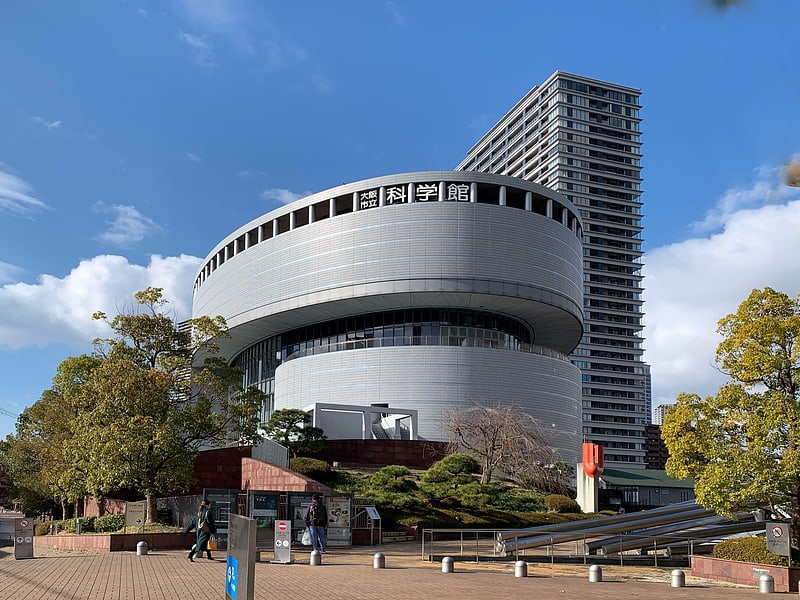
Also known as: 大阪市立科学館
Hands-on exhibits exploring space . The Osaka Science Museum is a science museum in Naka-no-shima, Kita-ku, Osaka, Japan. The museum is located between the Dōjima River and the Tosabori River, above Osaka's subterranean National Museum of Art. Opened in 1989, the museum was constructed to mark the 100th anniversary of Osaka City. The construction was funded through a 6.5 billion yen donation toward building costs from Kansai Electric. Its theme is "The Universe and Energy". Before the war a similar museum opened in 1937. It was known as the Osaka City Electricity Science Museum and it was both the first science museum and the first planetarium in Japan.
The Science Museum's primary permanent exhibition consists of four floors of mainly interactive science exhibits, totaling 200 items, with each floor focusing on a different theme. There is also a live science show with science demonstrations several times per day. Like the rest of the museum, these demonstrations are in Japanese only and visitors may require prior scientific knowledge to enjoy them.
The two secondary exhibits, both available separately from the primary exhibit, are a planetarium, which has a dome with a radius of 26.5 meters, the 7th largest in the world which projects the images of the heavens. In July 2004, the planetarium reopened after a renovation displaying the entire night sky as a next-generation digital image.
The museum also houses a collection of scientific resources, including
- Japan's first planetarium (a Carl Zeiss II model)
- the Cockcroft-Walton accelerator
- resources related to Seimikyoku, Japan's first full-fledged chemistry laboratory
- pre-war electrical measuring devices
Its collection of books and magazines for a general audience, largely on astronomy, is the most comprehensive in West Japan.
The science building is the place where Hideki Yukawa created his theory on mesons, for which he was awarded a Nobel prize. At the time this building was part of Osaka University. It was also the first place in Japan where radio waves from the universe were measured.[18]
Address: 4-2-1 Nakanoshima, 530-0005 Kita (キタ)
Sumiyoshi-taisha
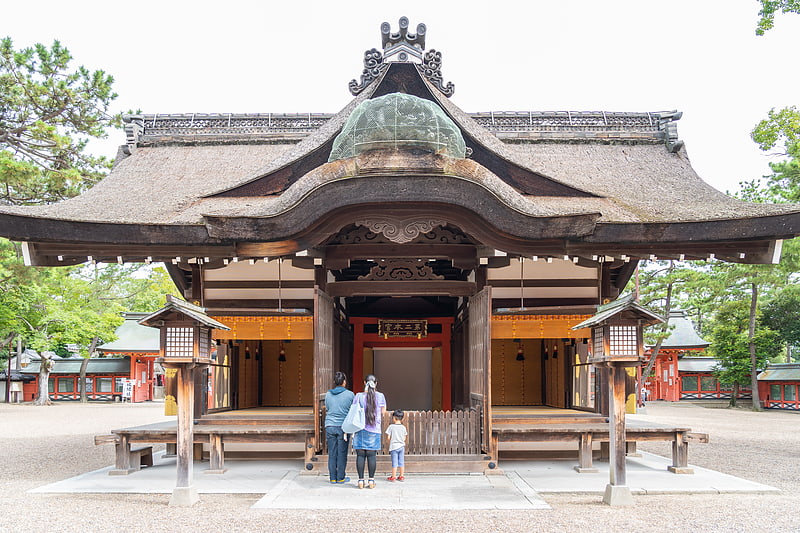
Also known as: 住吉大社
Storied shrine with a tranquil garden. Sumiyoshi-taisha, also known as Sumiyoshi Grand Shrine, is a Shinto shrine in Sumiyoshi-ku, Osaka, Osaka Prefecture, Japan. It is the main shrine of all the Sumiyoshi shrines in Japan. However, the oldest shrine that enshrines the Sumiyoshi sanjin, the three Sumiyoshi kami, is the Sumiyoshi Shrine in Hakata.
It is called Sumiyoshi-san or Sumiyossan by the locals, and is famous for the large crowds that come to the shrine on New Year's Day for hatsumōde.
Sumiyoshi taisha enshrines the Sumiyoshi sanjin (Sokotsutsu no Ono-mikoto, Nakatsutsu no Ono-mikoto, and Uwatsutsu no Ono-mikoto) (collectively known as the "Sumiyoshi Ōkami") and Okinagatarashi-hime no Mikoto (Empress Jingū).
It gives its name to a style of shrine architecture known as Sumiyoshi-zukuri.[19]
Museum of Oriental Ceramics
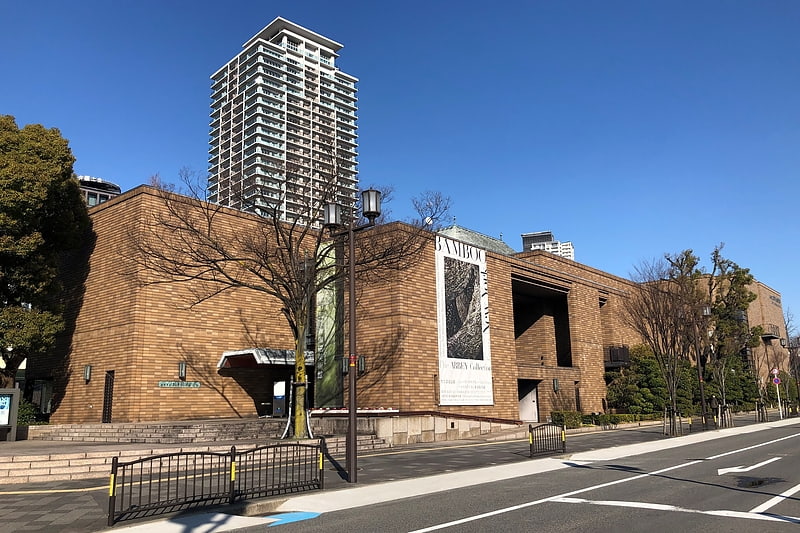
Also known as: 大阪市立東洋陶磁美術館
Museum in Osaka, Japan. The Museum of Oriental Ceramics, Osaka is a Japanese art museum and regarded as one of the best ceramic-collections in the world. This museum collects, studies, conserves, exhibits and interprets East Asian ceramics, which mainly came from ancient China and Korea. The world-famous Ataka Collection, donated by the 21 companies of the Sumitomo Group, as well as the Rhee Byung-Chang Collection, provide the public an aesthetic experience with first-class collection.[20]
Address: 1 Chome-1-26 Nakanoshima, Kita-ku, Ōsaka-shi, 530-0005 Osaka (キタ)
Osaka-jō Hall
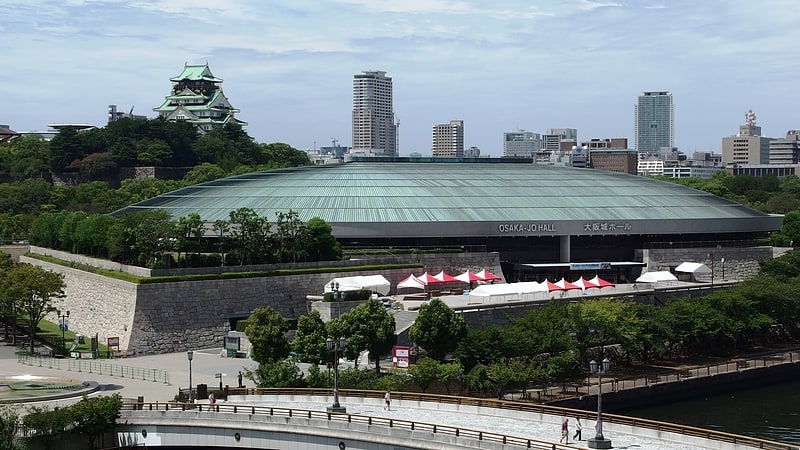
Also known as: 大阪城ホール
Arena in Osaka, Japan. Osaka-jō Hall is a multi-purpose arena located in the Kyōbashi area of Osaka, Japan. The hall opened in 1983 and can seat up to 16,000 people. Built on a site area of 36,351 square meters, part of its form uses stone walls, modeled after those of the Castle and it won the Osaka Urban Scenery Architects Prize Special Award in 1984.
The hall may be reached on a short walk from either Osaka Business Park Station on the Osaka Municipal Subway Nagahori Tsurumi-ryokuchi Line or Osakajōkōen Station on the JR Osaka Loop Line. The hall is located in Osaka-jō Park, near Osaka Castle and is across a river from two other smaller concert halls.
It is used for some sports, such as judo championships and wrestling matches such as those for the New Japan Pro-Wrestling promotion for their annual NJPW Dominion event in 2020 NJPW started to use the venue for their New Beginning show, and is popular for concerts, with many native and international pop and rock music artists.
Each winter, 10,000 people come to the hall to participate in a performance of Beethoven's Symphony No. 9.[21]
Address: 3-1 Osakajo, 540-0002 Osaka (ミナミ)
Hōkoku Shrine
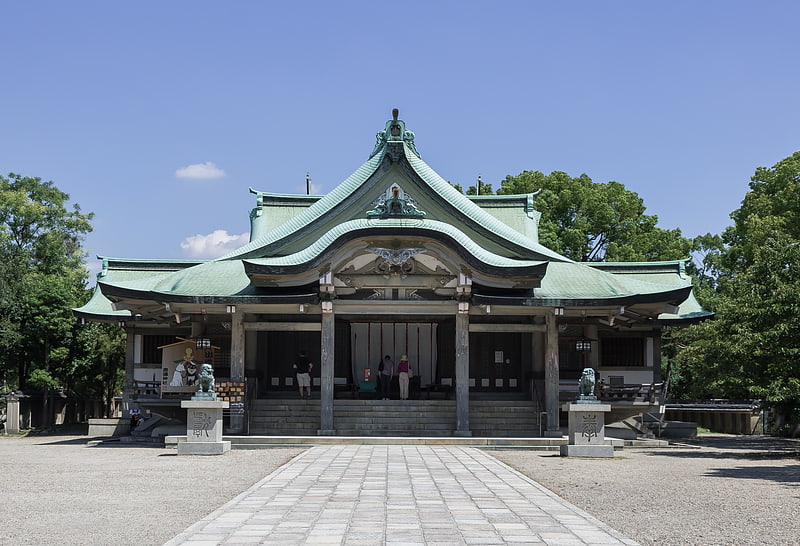
Also known as: 豊國神社
Historic Shinto shrine to Japanese ruler. Hōkoku Shrine is a Shinto shrine located in Osaka, Japan. It is one of several Toyokuni shrines built in honor of Toyotomi Hideyoshi. It is part of the Osaka Castle Park.[22]
Address: 2-1 Osakajo, Chuo-ku, 540-0002 Osaka (ミナミ)
Sakuya Konohana Kan
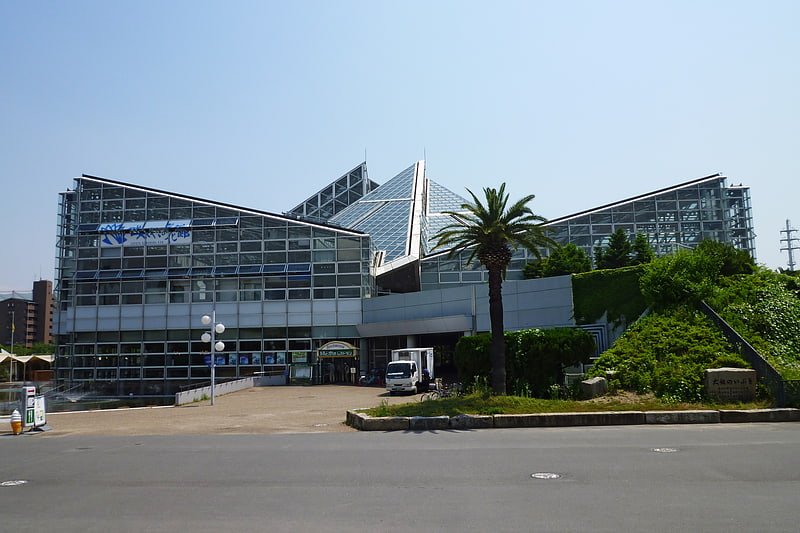
Also known as: 咲くやこの花館
Botanical garden in Moriguchi, Japan. The Sakuya Konohana Kan is a botanical garden set within one of the world's largest greenhouses, located in Tsurumi Ryokuchi park at 2-163 Ryokuchi Koen, Tsurumi-ku, Osaka, Japan. It is open daily except Mondays; an admission fee is charged.
The gardens were constructed between 1987 and 1989, and currently contain about 15,000 plants representing 2,600 species from various climatic zones. Total floor space is about 6,900 m² with a maximum height of 30 meters. The conservatory is divided into a number of cool and hot houses as follows:
- Alpine House - 200 alpine plant species including primula, blue poppy from the Himalayas and western China, and alpine plants from the Alps, Rockies, and Japanese mountains
- Arctic and Antarctic Plant Area - cold-region flora including moss from the Showa Station (Antarctica) and Saxifraga oppositifolia from the Arctic Circle
- Flower Hall - exhibit hall with coconut palm trees
- Humid Tropical Plant House - jungle plants from the tropics, including orchids, palm trees, and Chinese banyan
- Succulent Plant House - desert plants from Africa, Madagascar, Australia, and Latin America
- Tropical Aquatic Plant Area - aquatic plants including waterlily, victorias, and mangroves
- Tropical Flowering Trees and Shrubs
- Tropical Insectivorous Plant Area - Nepenthes and other carnivorous plants
- Tropical Water Plants in Aquarium - aquatic plants within an aquarium
The greenhouse's name is taken from the phrase Sakuya Konohana (咲くやこの花), the beginning of a poem collected in the Kokin Wakashū anthology edited in 905 at Emperor Daigo's order. It means "Now is the time for the blossoms to bloom in Osaka".[23]
Address: 2-163 Ryokuchikoen, Tsurumi-ku, 538-0036 Osaka (東大阪)
National Museum of Ethnology
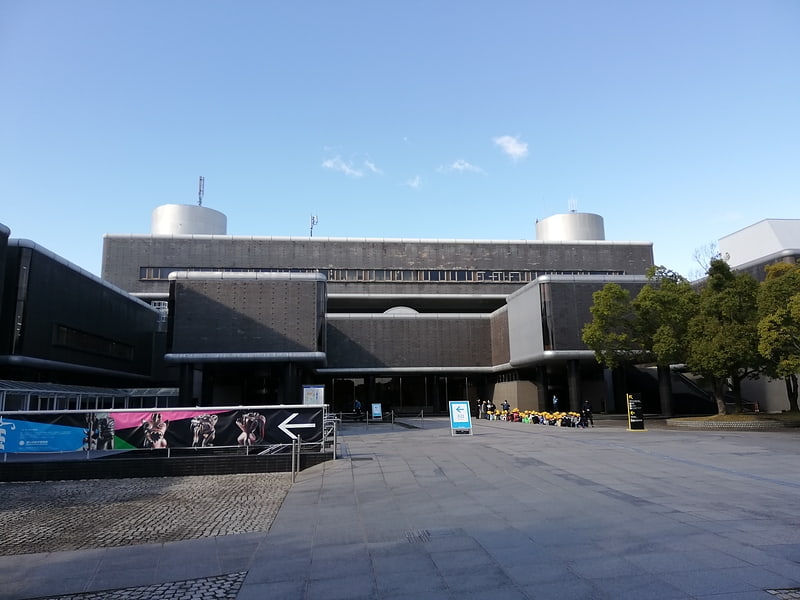
Also known as: 国立民族学博物館
Museum in Suita, Japan. The National Museum of Ethnology is one of the major museums in Japan. It is Japan's largest research institute in the academic disciplines of humanities and social sciences, which was established in 1974 and opened to the public in 1977. It is built on the former grounds of Expo '70 in Suita, Osaka. The founding collection is known as the Attic Collection, and is an early 20th-century ethnological collection of mainly Japanese materials, including some early finds of Jōmon archaeological artifacts. Further collections were brought together for the opening in 1977 and collecting activities have continued since.
The main focus of collection has been film, still images, sound recordings, and objects representing diverse aspects of everyday life, from farming to food, urban life, folk crafts, and religion. Permanent galleries for all large regions of the world display only part of the full collection.
Two special exhibitions of approximately three months duration are presented in Spring and Autumn each year, and there are numerous smaller temporary exhibitions on special themes.
The museum has a staff of approximately 70 researchers, and actively supports visits by scholars around Japan and abroad. The museum library is one of the largest academic, multiple-language reference libraries in Japan, with books and journal in Japanese, English, Chinese, Spanish, and other languages. The library is linked to a national network of public university libraries.
The Museum offers PhD courses in association with Japan's Inter-University of Advanced Graduate Studies (Sōkendai), an inter-institutional organization that provides administration for students placed in public research institutes and laboratories all over Japan.
The National Museum of Ethnology is also a founding member of the National Institutes for Humanities (NIHU), Japan.[24]
Address: 10-1 Senribanpakukoen, 565-0826 Suita
Nakanoshima Park
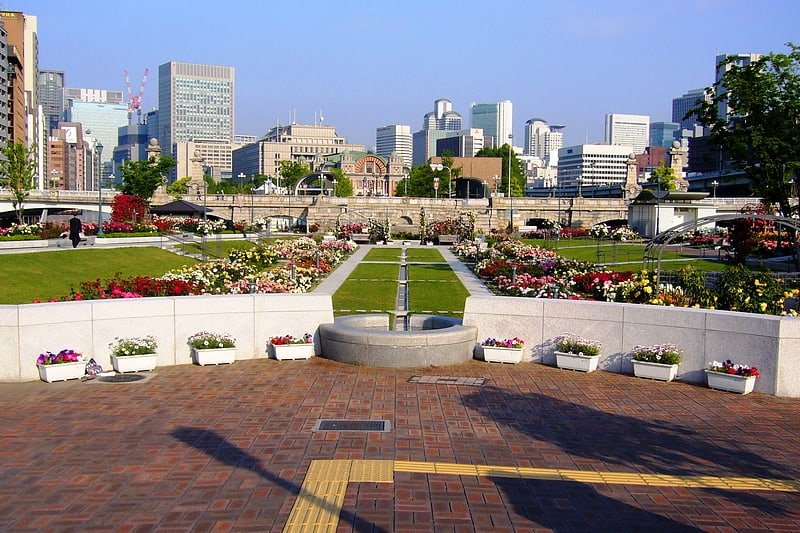
Also known as: 中之島公園
Park in Osaka, Japan. The Nakanoshima Park is the first public park opened by Osaka in 1891, after its foundation as a city. It is located in Kita ward, on the Nakanoshima sandbank, lying between Dōjima and Tosabori Rivers. The 11 hectare park houses public facilities such as Osaka Central Public Hall, Osaka Prefectural Nakanoshima Library and Museum of Oriental Ceramics. It also holds a rose garden. The City Hall of Osaka building is located on its west end.[25]
Address: 1 Nakanoshima, Kita-ku, 530-0005 Kita (キタ)
Osaka City Museum of Fine Arts

Also known as: 大阪市立美術館
Museum in Osaka, Japan. The Osaka City Museum of Fine Arts is a museum located in Tennōji Park, Tennōji-ku, Osaka, Japan. The museum focuses on Japanese and east Asian art.[26]
Address: 1-82 Chausuyamacho, Tennoji Ward, Osaka, 543-0063 Osaka
Ōtori taisha
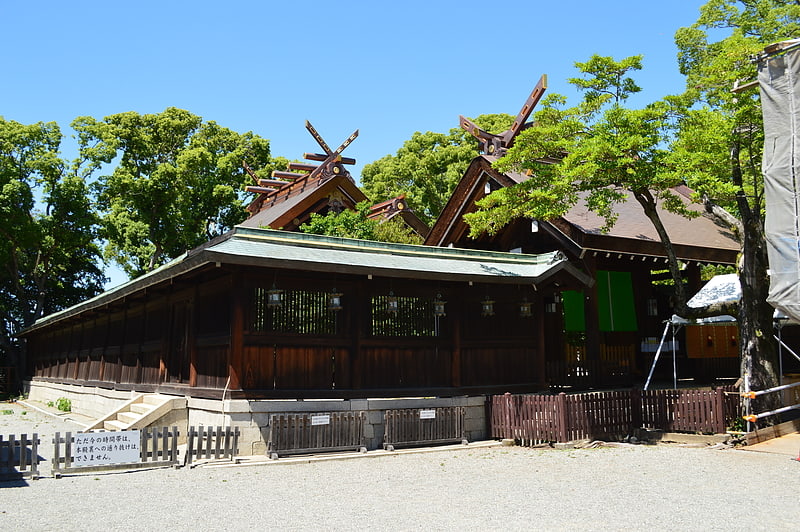
Also known as: 大鳥大社
Shinto shrine in Sakai, Japan. Ōtori Shrine is a Shinto shrine located in Nishi-ku, Sakai, Osaka Prefecture, Japan. It is the ichinomiya of former Izumi Province. The shrine's main festival is held annually on August 13.[27]
Hattori Ryokuchi Park
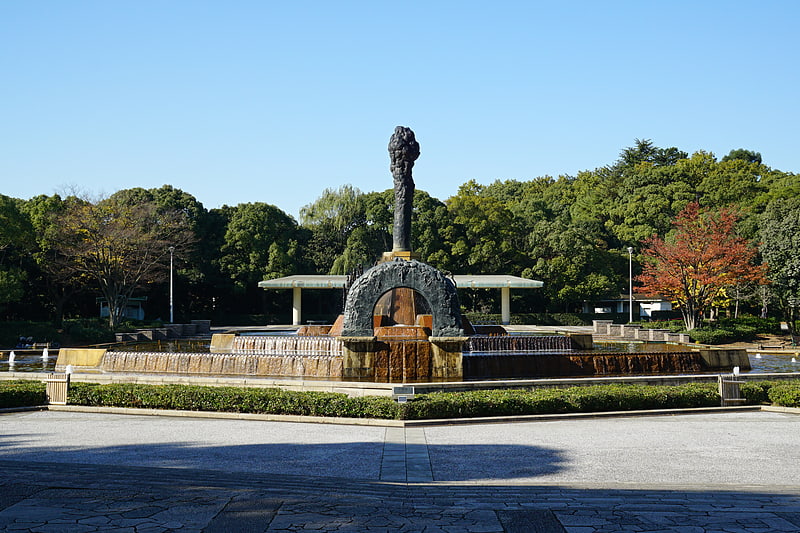
Also known as: 服部緑地
City green space with trails and tennis. Hattori Ryokuchi Park is a large, hilly park in northern Osaka. It is most famous for its Open-Air Museum of Old Japanese Farmhouses, which contains examples of rural architecture from various parts of Japan. It also contains tennis courts, bamboo gardens, ponds, playgrounds, flower gardens, a concert hall, a "flower road", a horseback riding track, and a "water world".
Hattori (服部) is the name of this region of the city, while ryokuchi (緑地) is a generic word for a green space, used for numerous other urban parks.
There was a YHA youth hostel in the park that closed at the end of August 2011.[28]
Address: 1-1 Hattoriryokuchi, 561-0873 Toyonaka
Tennoji Park

Also known as: 天王寺公園
Manicured city space with cafes. The Tennōji Park is a park with botanical garden at 1–108, Chausuyama-cho, Tennōji-ku, Osaka, Japan.[29]
Address: 1_108 Chausuyamacho, Tennoji-ku, 543-0063 Osaka
Utsubo Park
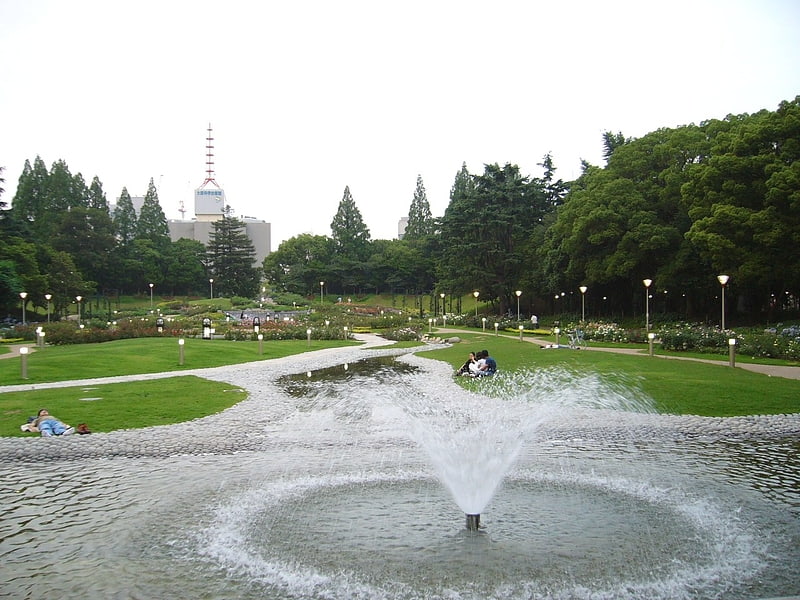
Also known as: 靱公園
City park in Osaka, Japan. Utsubo Park is a large public, urban park, situated at Utsubo-Hommachi in Nishi-ku, Osaka, Japan.
The park was constructed at the site of a former air field of the United States Army, so the land is a long rectangle shape characteristic of a runway (700m x 150m). This place was one of the busiest fish wholesale markets (Zakoba fish market and Utsubo dried fish market), from Edo period until 1931, at that time a new wholesale market was opened at Fukushima ward.
The Utsubo Tennis Center occupies a large area of the western part of the park. Some international tennis tournaments have been held there. The most famous one is the HP Open and World Super Junior Tennis Championships.
Around the eastern part of this park, many cafes and bakery have opened after 1990. Sometimes open-air wedding are held at the rose garden. This area is becoming one of the fashionable places in Osaka city.[30]
Address: 2-1-4 Utsubohonmachi, Nishi-ku, 550-0004 Osaka (ミナミ)
Expo '70 Commemorative Stadium
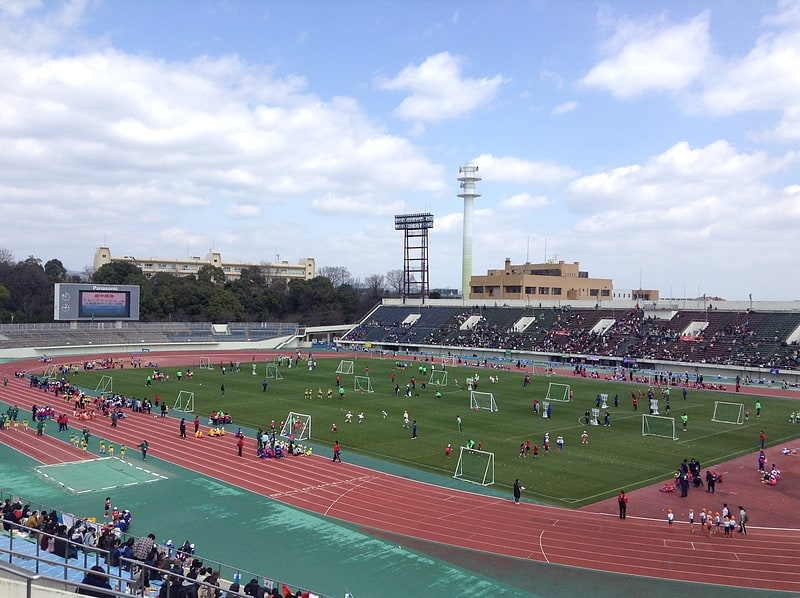
Also known as: 万博記念競技場
Stadium in Suita, Japan. Expo '70 Commemorative Stadium, also called Osaka Expo '70 Stadium, is an athletics stadium located in the Expo Commemoration Park, the site of Expo '70, in the city of Suita, Osaka Prefecture, Japan. It has a capacity of around about 21,000.
The stadium was the home ground of J.League club Gamba Osaka between 1993 and 2015 before the club moved to Suita City Football Stadium. It remains in use as a local athletics venue, rugby and as a home venue for Gamba Osaka's Under-23 team in the J3 League.[31]
Address: 5-2 Senri Banpakukoen, 565-0826 Suita
Itsuō Art Museum
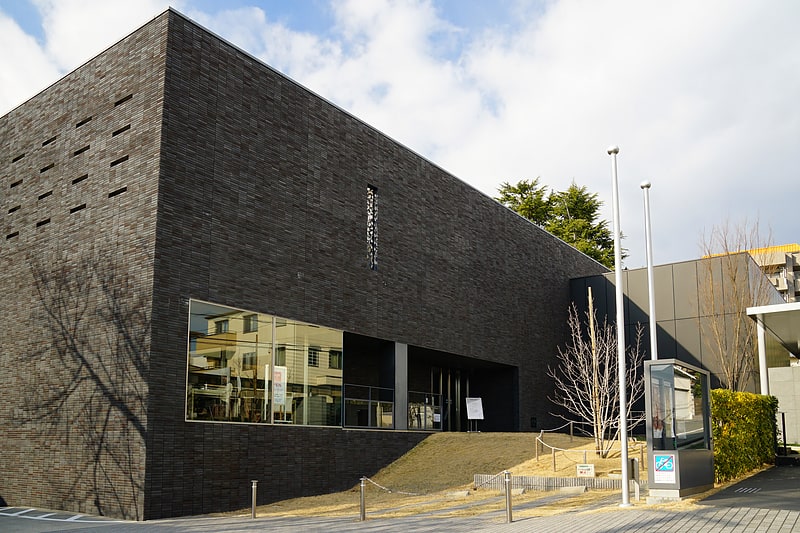
Also known as: 逸翁美術館
Museum in Ikeda, Japan. Itsuō Art Museum opened in Ikeda, Osaka Prefecture, Japan, in 1957. The new building opened in 1997. The collection, built up by founder Kobayashi Ichizō, whose pseudonym was Itsuō, comprises some 5,500 works, including fifteen Important Cultural Properties and twenty Important Art Objects.[32]
Address: Osaka, 12-27 Sakaehonmachi
CupNoodles Museum
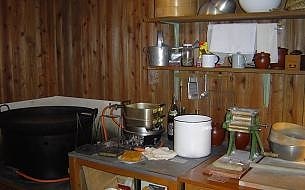
Also known as: 安藤百福発明記念館 大阪池田
Museum in Ikeda, Japan. CupNoodles Museum may refer to one of two museums in Japan:
- CupNoodles Museum Osaka Ikeda
- CupNoodles Museum Yokohama
Yodoko Sakura Stadium
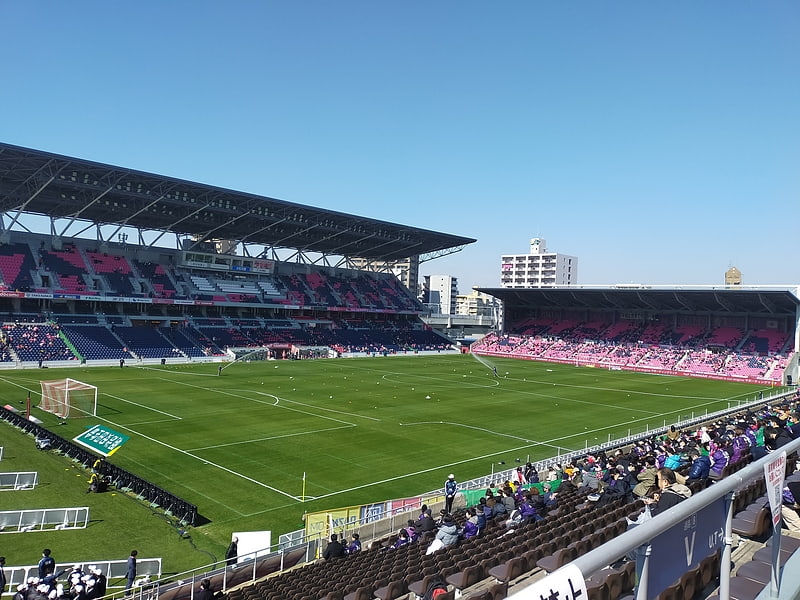
Also known as: 長居球技場
Stadium in Osaka, Japan. Nagai Ball Game Field, named Yodoko Sakura Stadium for J. League football games, Top League rugby football games, and X-League American football games from 2021, is a football and rugby union stadium located in Nagai Park, Higashisumiyoshi-ku, Osaka, Japan. The 25,000 seat stadium is the third stadium in the Nagai Complex along with Nagai Stadium, and Nagai Aid Stadium.
With Cerezo Osaka's moving the home and the renovation of the stadium in 2010, the naming rights of the stadium were advertised. The rights were knocked down to Dainihon Jochugiku Company, Limited (大日本除虫菊株式会社, Kincho) for 36 million yen a year and stadium was named "Kincho Stadium (キンチョウスタジアム)". The name was used from August 1, 2010 until December 31, 2018. Kincho also became the uniform sponsor for Cerezo Osaka. The Stadium was completely renovated for its reopening in June 2021.[34]
Address: 1-1 Nagaikoen, Higashisumiyoshi-ku, 546-0034 Higashisumiyoshi (南大阪)
Hanazono Rugby Stadium

Also known as: 東大阪市花園ラグビー場
Stadium in Higashi-osaka, Japan. The Hanazono Rugby Stadium in Higashiosaka is the oldest rugby union stadium in Japan specifically dedicated to rugby. Its location is next to Hanazono Central Park. Owned by the City of Higashiosaka, it opened in 1929 with a capacity of 26,544. It is the stage for the annual National High School Rugby Tournament held every year at the end of December and has hosted important international, Top League games.
Hanazono is the home of the Kintetsu Liners rugby union team.
The stadium was selected as one of the venues for 2019 Rugby World Cup (Japan) which was the first Rugby World Cup to be held in Asia.[35]
Address: 1-1-1 Matsubaraminami, 578-0923 Higashiosaka